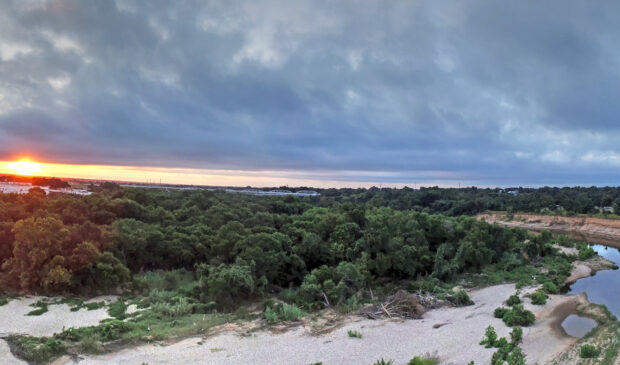Austin Watershed Protection Department proposes code updates to further protect the Colorado River
Monday, November 4, 2024 by
Hunter Simmons The Austin Watershed Protection Department held a public meeting on Monday, Oct. 28, at the Montopolis Recreation and Community Center to discuss proposed code updates regarding the Colorado River.
In 2022, City Council passed a resolution directing the city manager to “address the equitable protection of the environment throughout the City of Austin as part of the Watershed Protection Strategic Plan, with emphasis on the protection of Blackland Prairie. Regulations related to cut and fill and creek protection shall be among the considerations.” After the resolution passed, the Watershed Protection Department prepared code updates that would protect the Colorado River downstream of Longhorn Dam. The department is recommending updating erosion protections in Austin’s Land Development Code and associated criteria manuals. The soils downstream of Longhorn Dam are sandy and easily wash away, threatening roads, pipes and even buildings. Code updates can help prevent new problems in the future as this area continues to develop.
The proposed code updates would apply only to the Colorado River from Longhorn Dam to the edge of Austin’s extraterritorial jurisdiction. Landowners and the curious can use the Colorado River Protections Ordinance Viewer to assess which properties would be affected.
There are two main aspects to the proposed code updates: widening the area where an Erosion Hazard Zone Analysis is required and implementing new requirements for discharging stormwater into the Colorado River.
Currently, to receive a building permit within 100 feet of a creek or the Colorado River, a person is required to provide an “erosion hazard zone” analysis. If the analysis shows the proposed building is within the erosion hazard zone, the area along waterways most prone to bank erosion, then protective measures are required. This is to prevent the building from being damaged or destroyed if the riverbank gets washed away or by other catastrophic erosion.
The proposed code update would widen the area where an analysis is required from 100 feet to 200 feet for the Colorado River, downstream of Longhorn Dam. The current 100-foot requirement was designed for smaller creeks. Thus, it is not large enough to protect buildings and infrastructure along the Colorado River.
Regarding the new requirements for discharging stormwater, deep canyons and gullies can form where stormwater is concentrated and discharged into the Colorado River, due to the sandy, highly erosive riverbanks. These canyons can rapidly expand inland and threaten homes, businesses, roads and other infrastructure.
Erosion problems can be expensive and sometimes even impossible to repair or mitigate. Millions of dollars in public money have already been spent on erosion problems in alluvial areas by the Colorado River. Significant erosion sites in the Colorado River alluvial areas include the Tillery Street Storm Drain, Roy Guerrero Park/Krieg Fields, Hergotz Lane, Walnut Creek Trail, Knollwood on the Colorado, Delwau Lane, Fallwell Lane, Mining Breach and Austin’s Colony.
The Land Development Code already bans discharging water in a way that causes erosion. The watershed department is working on updates to the criteria manuals. The criteria manuals provide technical requirements and specifications when designing outfalls.
The department has notified affected property owners of the proposed updates. They will also conduct presentations and public hearings at various city boards and commissions. These commissions may vote to recommend the updates or recommend them with modifications.
The tentative schedule for public hearings includes presentations at the Environmental Commission on Nov. 6 and the Planning Commission on Nov. 12. Once the department has heard from the boards and commissions, they will present the updates to City Council on Dec. 12. City Council will then conduct a public hearing and vote on whether to adopt the updates and amend the current City Code.
Photo made available through a Creative Commons license.
The Austin Monitor’s work is made possible by donations from the community. Though our reporting covers donors from time to time, we are careful to keep business and editorial efforts separate while maintaining transparency. A complete list of donors is available here, and our code of ethics is explained here.
You're a community leader
And we’re honored you look to us for serious, in-depth news. You know a strong community needs local and dedicated watchdog reporting. We’re here for you and that won’t change. Now will you take the powerful next step and support our nonprofit news organization?






